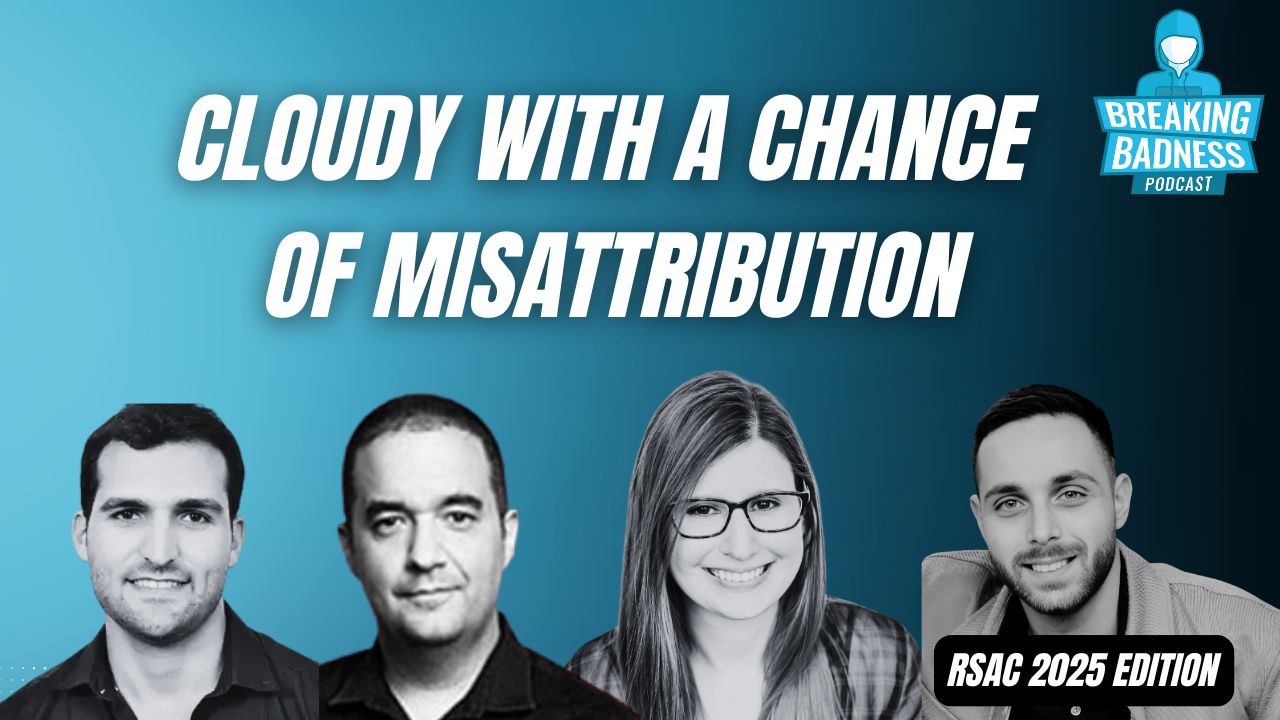Defending Your Digital Domain: AI, Ransomware, and the Power of Reputation
The Future of Cybersecurity: AI, Ransomware, and Domain Reputation
In this episode of Breaking Badness, we bring together cybersecurity thought leaders Raymond Dijkxhoorn, Nabil Hannan, and Jason Mar-Tang to discuss some of the most pressing issues in the industry: AI, ransomware, and the evolving role of domain reputation. This dynamic conversation covers everything from phishing defense to the challenges posed by AI and the constant evolution of ransomware tactics.
Domain Reputation: The Unsung Hero of Cybersecurity Defense
One of the key points of discussion was domain reputation, a foundational aspect of digital security that often goes unnoticed. Raymond Dijkxhoorn, CEO of SURBL, emphasized how domain intelligence has become a crucial element in fighting phishing and spam. What started as a solution to filter unwanted emails has now evolved into a vital tool that determines whether communications should be trusted or rejected by mailbox providers. Dijkxhoorn elaborated on how domain reputation is more reliable than IP-based security measures. With IP addresses constantly shifting—especially with the growth of cloud services—the domain has become a more stable and long-term identifier of trustworthiness.
Key Insights:
- Domain Intelligence is Vital: Initially developed to combat spam, domain reputation has become critical for various industries beyond email filtering, including finance and social media.
- Cousin Domains and Phishing: Dijkxhoorn highlighted the rise of “cousin domains,” which cybercriminals use to spoof legitimate companies, tricking users into trusting fraudulent websites.
- Snowshoe Spamming: Attackers are using “snowshoe spamming,” where they send small volumes of spam from multiple IPs, making it harder to detect and block them.
“The reputation of domain names is more relevant and a more steady factor to look at than just an IP.”
The AI Revolution: Hype vs Reality in Cybersecurity
AI is all the rage in cybersecurity discussions, but is it really the solution we think it is? Nabil Hannan, Field CISO of NetSPI, brought a controversial yet enlightening perspective to the conversation. He believes the term “Artificial Intelligence” is somewhat misleading. Instead of true intelligence, current AI systems are advanced algorithms processing massive datasets. Hannan warns that many organizations rush to adopt AI without focusing on the basics of cybersecurity, such as proper data hygiene and multi-factor authentication (MFA). The rapid adoption of AI without foundational security practices can increase risk rather than mitigate it.
Key Insights:
- AI is Not a Cure-All: AI has significant potential, but it’s not the solution to every cybersecurity problem. Companies need to focus on foundational security measures before adopting AI.
- The AI FOMO (Fear of Missing Out): Organizations often rush to integrate AI due to market pressures without understanding its limitations and the risks involved.
- Prompt Injection Attacks: AI systems can be manipulated through clever questioning, a tactic known as prompt injection, which can lead to unintended and harmful outcomes.
“There’s a huge AI FOMO… but I don’t think everything needs to be solved with AI-based solutions.”
Ransomware: Evolving Threats in the Digital Landscape
Ransomware continues to be one of the most devastating and high-profile cyber threats, and Jason Mar-Tang, Field CISO at Pentera, delivered a passionate overview of its progression. What started with basic encryption and ransom demands has evolved into double and triple extortion schemes, where attackers not only encrypt data but also threaten to release or sell sensitive information if the ransom isn’t paid. Jason also touched on the rise of ransomware-as-a-service (RaaS), making it easier for even low-skilled cybercriminals to launch devastating attacks. The introduction of AI into this space has further complicated matters, with AI helping to craft phishing emails with perfect grammar in multiple languages, making them harder to detect.
Key Insights:
- Ransomware is Evolving: New tactics, such as double and triple extortion, make ransomware attacks even more dangerous. The encryption of systems is often followed by threats to leak data.
- Ransomware-as-a-Service (RaaS): Even non-expert attackers can now buy ransomware services, complete with SLAs, increasing the frequency and reach of attacks.
- AI in Phishing: Attackers are using AI to create more convincing phishing emails, often written in multiple languages without the usual grammatical errors that might raise suspicion.
“Ransomware continues to be successful because attackers are lazy, and why would they change something if it works?”
AI and Ransomware: A Double-Edged Sword
The conversation between the guests also touched on the potential for AI to become both a weapon and a defense in the cybersecurity landscape. Jason Mar-Tang highlighted how attackers are now using AI to generate deep fakes and social engineering attacks, mimicking voices to trick help desks into providing sensitive information. However, AI can also be a force for good. Jason pointed out that AI is enhancing tools used by cybersecurity teams, such as password-cracking capabilities and fuzzing techniques. The key takeaway: AI is a double-edged sword, and its use must be carefully controlled and monitored to ensure it doesn’t backfire.
Key Insights:
- Deepfakes and Social Engineering: AI-generated deep fakes are becoming more common, allowing attackers to mimic voices and trick help desks or users into giving up sensitive information.
- AI for Good: AI can be used to strengthen cybersecurity, especially in areas like password-cracking and security validation, helping defenders stay ahead of attackers.
“AI isn’t the silver bullet. It’s a double-edged sword that can both protect and harm.”
The Road Ahead: Cybersecurity in an AI-Driven World
As the episode wrapped up, the experts discussed the future of cybersecurity, with AI and ransomware likely to remain central issues. While AI offers incredible potential, it also brings new risks and challenges, and businesses must adopt it thoughtfully. Domain reputation, though less flashy, remains a critical aspect of defense, helping to identify and block phishing campaigns before they can cause harm.
The biggest challenge for defenders? Staying ahead of increasingly sophisticated attackers who are leveraging AI to launch more effective and dangerous campaigns. Ransomware will continue to evolve, but the fundamental battle remains the same: securing data, protecting reputations, and staying vigilant against ever-changing threats.
This episode of Breaking Badness highlights the importance of balancing innovation with strong foundational practices. Whether it’s AI, domain reputation, or ransomware, the evolving cybersecurity landscape demands a proactive and comprehensive approach to defense. By staying informed and focusing on both emerging and existing threats, organizations can safeguard their digital assets and protect their future.




